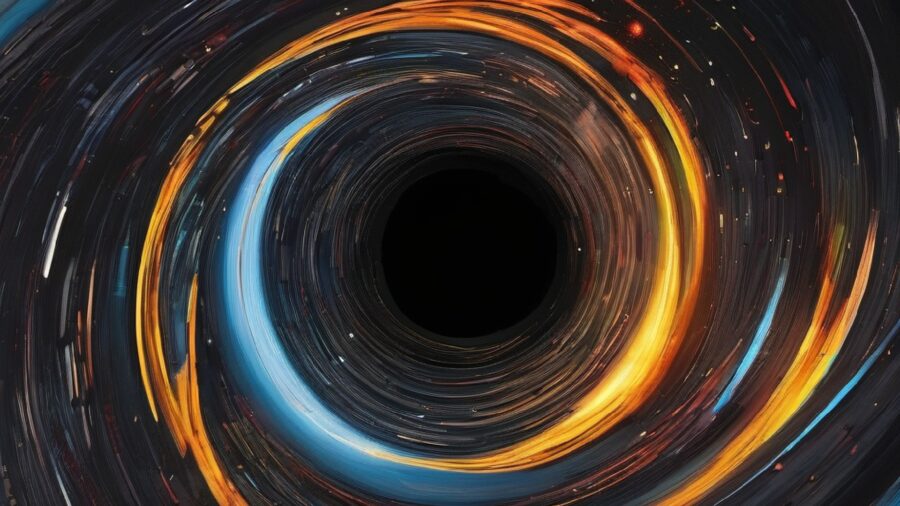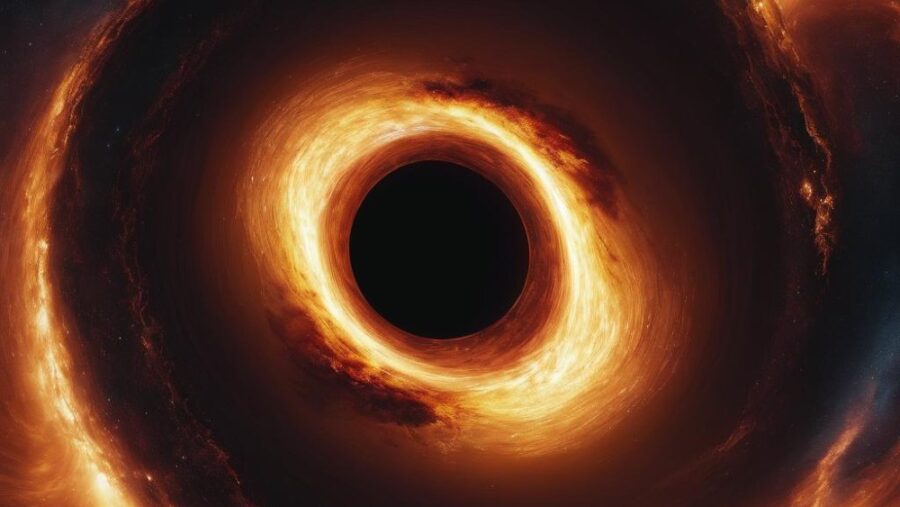NASA Reveals Look Inside Supermassive Black Hole, See The Mind-Bending Views

Space is a terrifying and fascinating place, and perhaps nothing embodies this more than black holes. Getting sucked into one is a situation no one wants to be in, but it would still be interesting to find out what would happen. Well, now you can explore one from the comfort of your couch thanks to the recent visualization NASA released that takes you through this mysterious space object.
Black holes are incredibly dense objects whose gravity is so immense that light can’t escape its event horizon. As humans existing on a (relatively) normal planet, it would be very hard to imagine what it would look like if we were falling into one. The animation makes this a little bit easier to imagine by showing how warped the light and space around you would be if you were ever to experience this phenomenon.
Our understanding of black holes is still relatively new, with the first one observed by independent researchers in 1971.
Jeremy Schnittman, an astrophysicist at NASA’s Goddard Space Flight Center, explained his approach to making the simulation, saying that the first simulation had the camera act as an astronaut who misses the event horizon and is shot back out. In the other simulation, the camera crosses the event horizon and experiences what it would be like to be in a black hole. That is if you weren’t instantly destroyed.
Our understanding of black holes is still relatively new, with the first one observed by independent researchers in 1971. Due to the difficulty of imaging them, we weren’t even able to get an image of one until 2019. We got another image of the one at the center of our Milky Way Galaxy in 2022.
Famously, Christopher Nolan consulted real scientists for his hit movie Interstellar in 2014, which has a breathtaking scene where Matthew McConaughey’s character enters a black hole.
Due to the difficulty and resource-intensiveness of imaging black holes, simulations like these can be useful research tools for astrophysicists to understand the physics of these incredible and strange space objects better. Of course, we’ve come quite a long way since 1971, and NASA’s Goddard Discover supercomputer completed this simulation with just 0.3 percent of its processing power. That’s especially impressive considering the release about the simulation, which states that a normal computer would take a decade to render the simulation while the Discover supercomputer only took five days.

Famously, Christopher Nolan consulted real scientists for his hit movie Interstellar in 2014, which has a breathtaking scene where Matthew McConaughey’s character enters a black hole. What we see here isn’t too dissimilar from a visual perspective. According to the release, the simulation starts the camera 400 million miles from the black hole, and light and spacetime begin to warp and bend around you.
Due to the difficulty and resource-intensiveness of imaging black holes, simulations like these can be useful research tools for astrophysicists to understand the physics of these incredible and strange space objects better.
Once the camera crosses the event horizon, it is stretched or “spaghettified” in less than 13 seconds. After this, the camera almost instantaneously travels to the singularity at the black hole’s center, roughly 79,500 miles after the point of spaghettification. In short, it’s safe to say that this supermassive black hole voyage is better enjoyed from the comfort of a simulation rather than experiencing the real thing.












